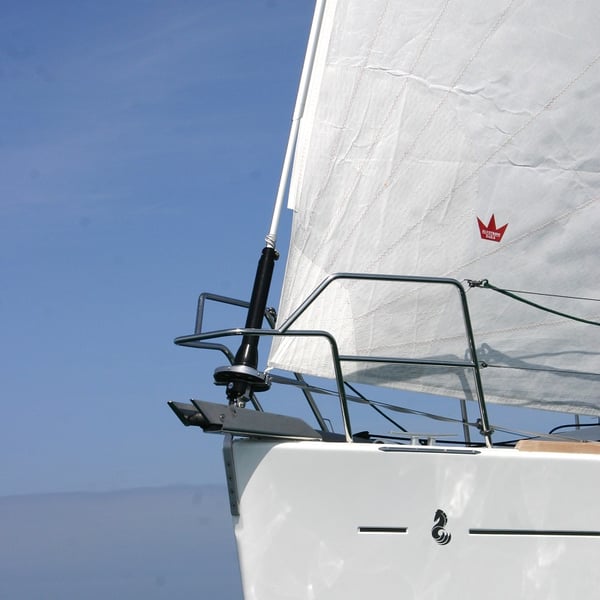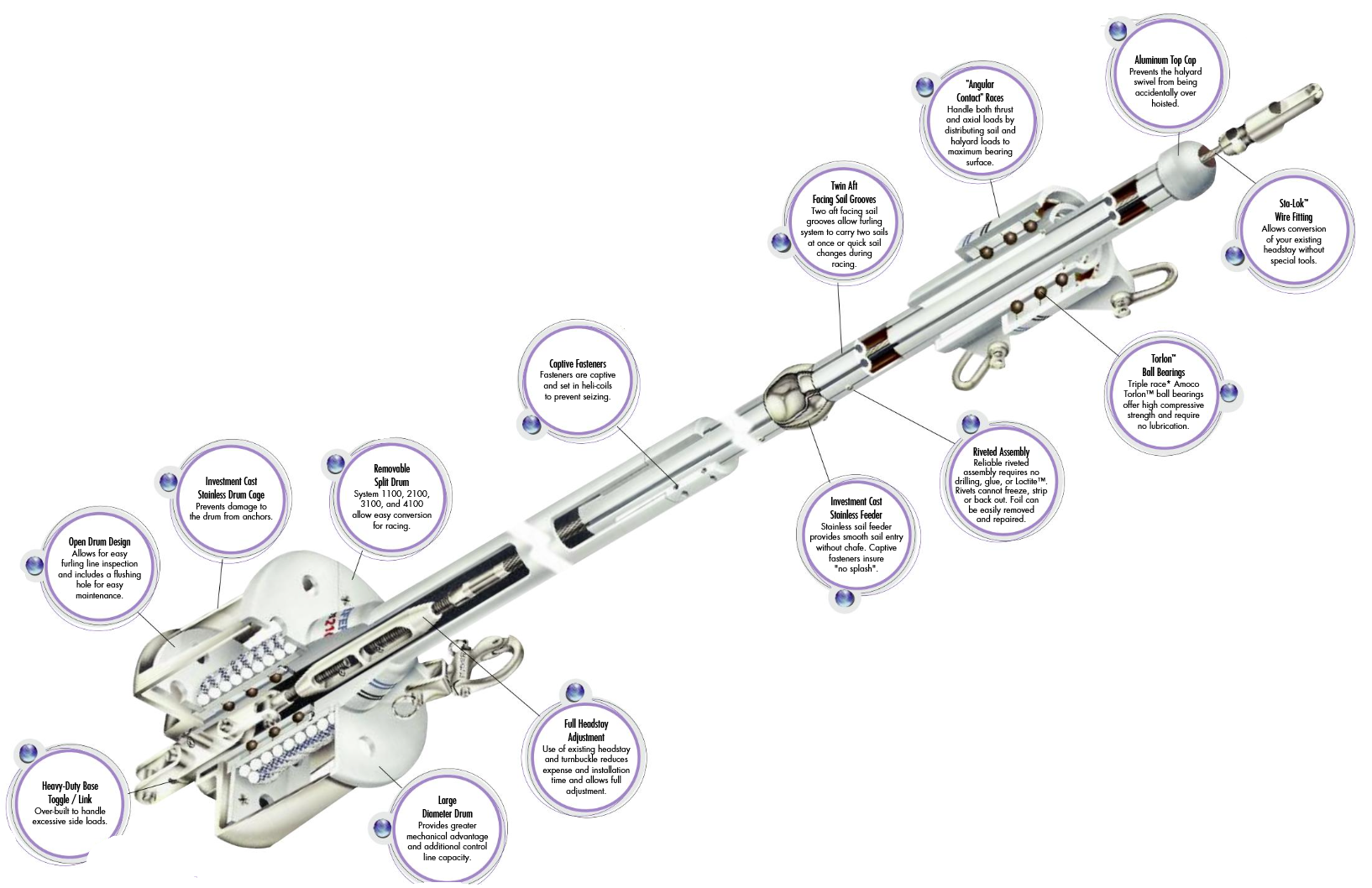
So, you’re in the market for a new genoa reefing system… either your existing furling unit is extremely old - and spare parts aren’t available anymore - or you’re choosing to switch from a forestay with hanks for more comfortable cruising.
If you belong to the latter, you might be a bit confused about what information you need to relay to the supplier (us!) in order to be matched with your perfect furling system.
Although some manufacturers can provide a ball park furler suggestion based on boat size, the following pieces of information are the primary requirements to find your ideal furling solution.

Image Credit: Schaefer Marine. Click here to view a bigger version of this diagram.
- Forestay Wire Diameter
- The most important of them all! To choose the correct furler, your supplier needs to know the diameter of your forestay and the material it is made from – for example, wire, rod or Dyform.
- This is important as a rod (commonly used for racing) or Dyform forestay (high-performance wire!) may have a smaller diameter, but greater strength than a wire forestay.
- You also need to decide whether you want to keep the old forestay or not. In a lot of cases it can be possible to have your existing forestay modified or shortened to fit the new system - although some (for example, Selden’s Furlex) include a new wire as standard.
- Before you decided to re-use, you should have a professional rigger perform a safety check on the existing forestay, as fatigue can be hard to spot.
- Forestay Length
- The length of your forestay will impact the number of foil sections required in your furling system.
- Make sure to double check the length included in the price of your furler - most manufacturers provide a standard number, but additional foil sections may need to be bought to achieve your desired length.
- Drum Height
- When choosing your new furling system, it is important to consider the position of the drum – high, or low?
- The performance option, a lower drum will allow the sail to have a longer luff length = more sail area.
- In comparison, a higher drum will raise the foot of the sail and provide better visibility under the genoa. This option is often chosen by cruising sailors due to safety considerations.
- Drum heights can be varied by choosing either short or long link plates which connect the drum to the deck chainplate.
- Turnbuckle Width
- Not normally an issue, but it is important to check the width of your turnbuckle, to ensure it will fit inside the furling drum.
- If your turnbuckle is too wide, changing the turnbuckle for one with a narrower body might be required.
- Clevis Pin Diameters
- When specifying a furling system, it is generally assumed that the forestay diameter will match industry standard clevis pin diameters in the boat chainplate and the mast tang.
- Whilst in most cases they are fine, rigging and masts get changed over time and these can sometimes be mismatched, which can lead to complications.
- Although not required to obtain the right price or specification of the drum, it is important to double check the pin diameters before placing the final order.
- This is also a reason why it is NOT advised to ‘size up’ your furling system with the hope of increased power, strength or durability: it can result in significant, hidden cost increases due to fitting incompatibility.
- Deck Chain Plate & Mast Tang Style
- Again, not necessary for the initial specification and budget stage, but prior to final order, it is important to provide information on the configuration of your bow chainplate and mast tang.
- Chainplates come in all different shapes and sizes however, the configuration will generally be one of two options:
- Nose (most common) – Single plate and requires a fork toggle interface
- Fork – Double plate & requires an eye toggle interface
- Hole diameter, orientation (fore & aft or lateral) and plate thickness / fork width are important dimensions to consider
- Remember: Pictures are worth a thousand words – take a couple of photos, they are invaluable!
- Luft Tape Groove Dimensions
- Finally, different foil sections have different groove sizes to fit the genoa luff tape.
- Therefore you should also check/measure the diameter of your luff tape.
- This measurement shouldn’t drive the specification choice for your furler – it is just something to have in mind in terms of comparing the overall costs.
- In most cases luff tapes will not be an issue, but if the correct furling system requires a luff tape change, this is a relatively quick / simple alteration for your sailmaker.
- If you are changing from a hanked headsail to a furling system, you should also discuss with your sailmaker the pro’s and con’s of re-using or replacing your existing sail.
If you have any questions about furlers, please feel free to email us at support@upffront.com, or click the link below to see our full range:



